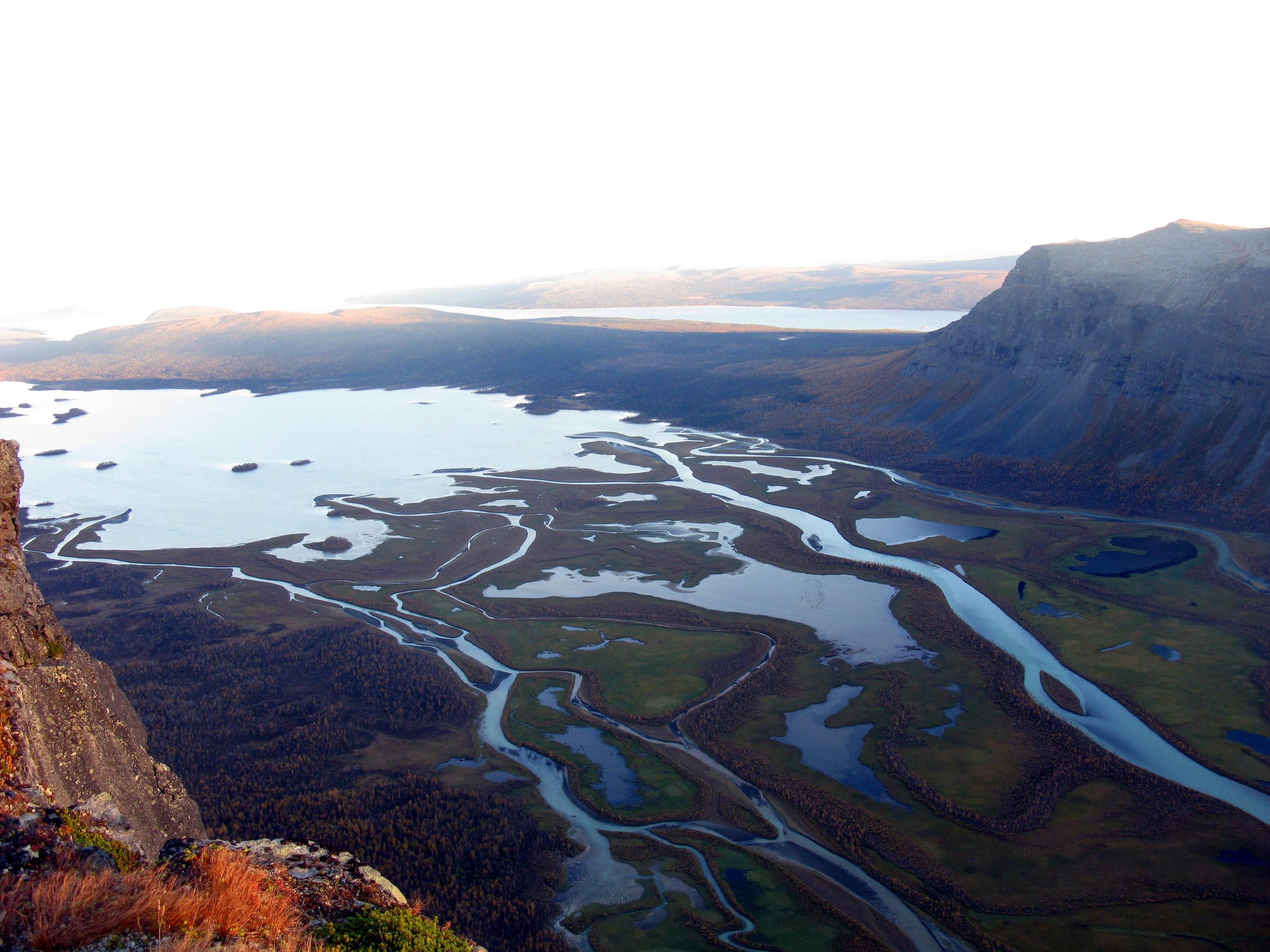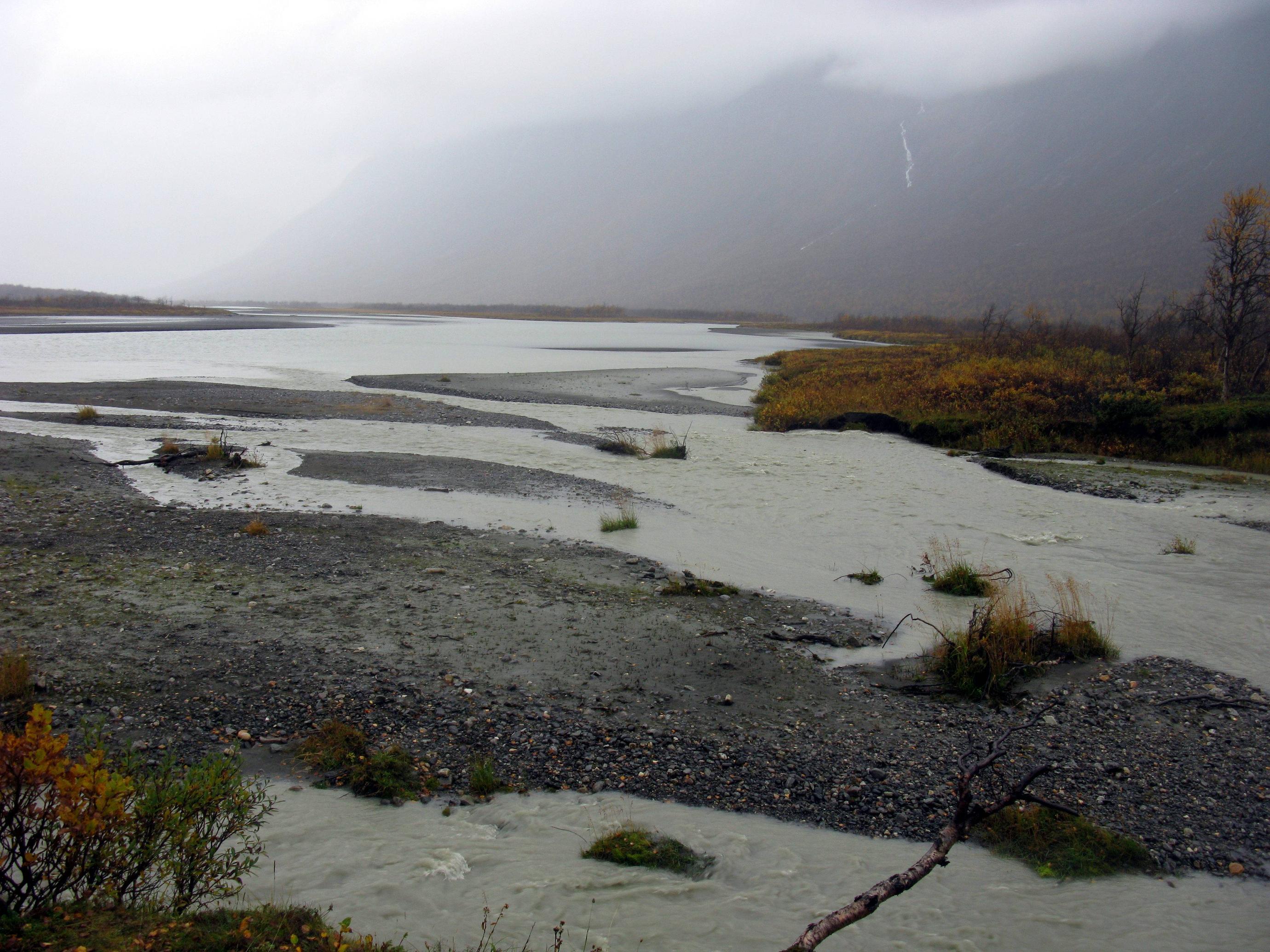The easiest is to take the routes that many people take, because on those routes, social trails have formed and you may find help if you are in trouble.
5–7 days is too short. Although you can get through quickly if you take take the route from Tjåmotis into Aktse and you might make it to Akkastugorna in 5 days, I would not recommend it. You should take extra days in case of delays, and if you are not late, you can use those extra days for detours or day trips. However, if you mean you have 7 days to get from Aktse to Kisuris (for example), you should be OK.
Kungsleden (the mountain "highway" full of cabins and trails so well maintained they remind of North American National Parks) leads through the far southeastern corner of the park, from Saltoluokta via Aktse to Kvikkjokk. At Aktse, you can take a boat to a point under Nammásj. From here, there is a reasonably good trail all the way to Skarja and Kutjaure at the tri-park-point with Stora Sjöfallet and Padjelanta. Although this trail is not an official trail and contains some laborious stretches, in particular through Rapaselet, it is nowhere difficult by Sarek standards, and at times actually has wooden planks laid out through wet areas. However, you will still need a tent and you will still need to ford streams. There are no navigational challenges.
This route is popular and if you hike it in summer, you will meet plenty of other people, probably several groups every day. That makes it easier as well, because you will not need to bring equipment such as a satellite phone: in summer on the trail you are certain to meet other people who may be of assistance in case of an emergency (by warning authorities as soon as they reach civilisation). However, I recommend autumn as the birch forest may be full of mosquitoes in summer.
I hiked this route in September 2013, and it's very, very beautiful, in particular the view from Skierffe above Aktse. We met people three times in total. If you do one thing in Sarek, hike to Skierffe — you can do it as a day trip from Aktse. You can also hike from Skierffe down to Rapadalen (we did this in 2013) but that requires more off-trail navigation including through the woods.
If you seriously only have 5–7 days, you won't make it far into Sarek. Use Aktse as a base and hike into the park 1–2 days, then turn around to where you came from. You won't have time to cross Sarek through Aktse if you start at Kvikkjokk or Saltoluokta.

View from Skierffe toward Laitaure, 11 September 2013

View from Skierffe toward Námmasj. The boat will drop you off at the bottom of Námmasj, so if you want to enjoy the view from Skierffe, do that as a day trip from Aktse before setting off into the Sarek wilderness.

Rapaselet, 14 September 2013

Alep Vássjájågåsj, 15 September 2013. You will need to ford this river (the contributary on the right, not the big one on the left, which is Ráhpaädno)

"Canal" without name on the map to be crossed. Not difficult, but unavoidable. No flow but it is around waist-deep. This obstacle is less than 30 minutes hiking west of crossing Alep Vássjájågåsj, and as I remember the terrain in-between is easy, so in good weather you could consider keeping your river-crossing footwear on.

Trails through Ruohtesvágge. 17 September 2013

Smájllájåhkå, 17 September 2013. In my experience, this is the most difficult ford of the route. As you can see, it's glacier-fed so it has substantial amounts of water year-round. It's not particularly difficult, but it's rather cold. I recommend to bring a wading staff.

19 September 2013. Approaching the merger between Sjnjuvtjudisjåhkå and Sjpietjavjåhkå, where Sarek, Padjelanta and Stora Sjöfallet meet, and the staffed Kisuris cabin is located. Soon after, you will reach the Mountain Highway of Padjelantaleden, from where getting back to civilisation is a walk in the park.







